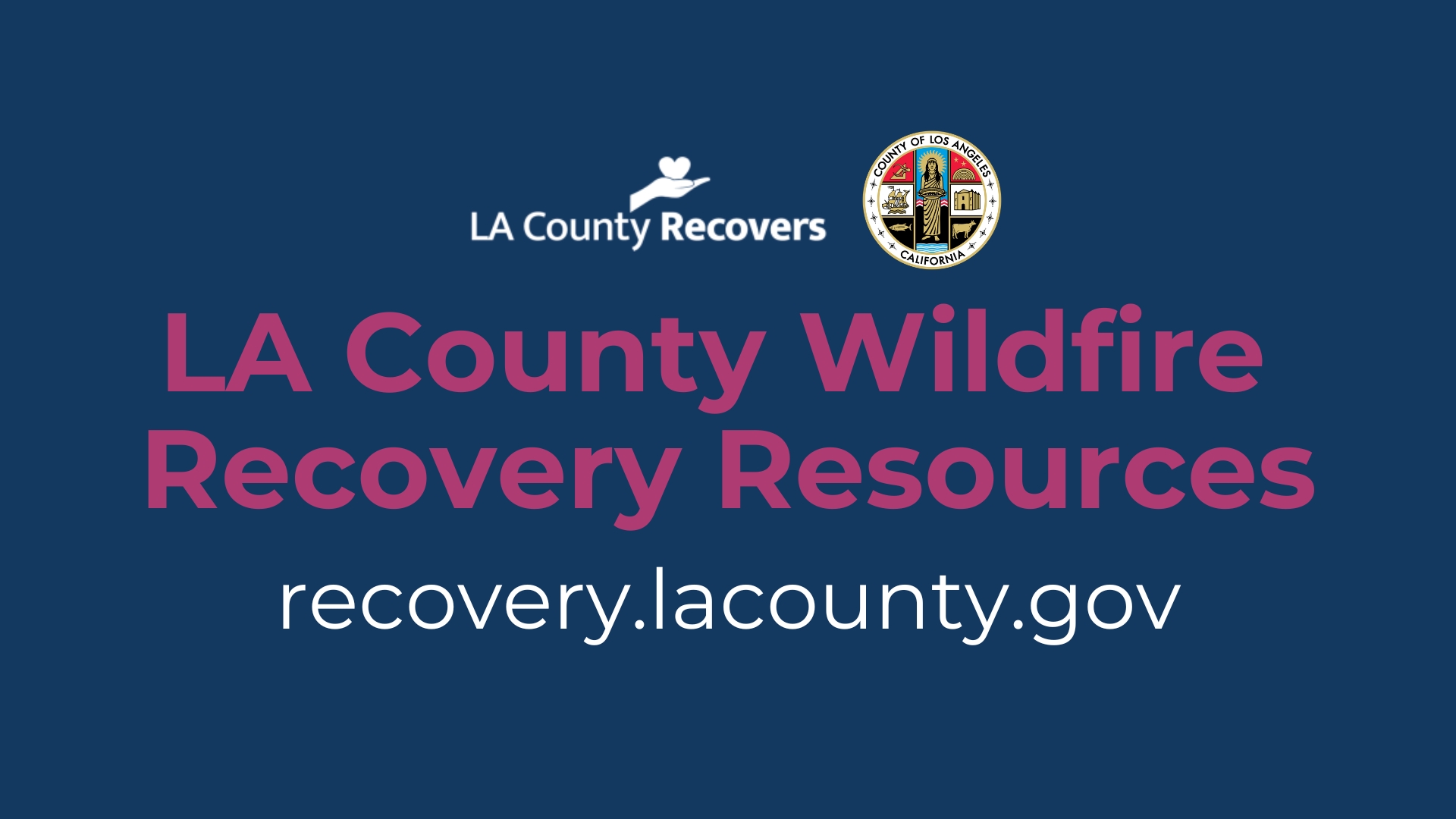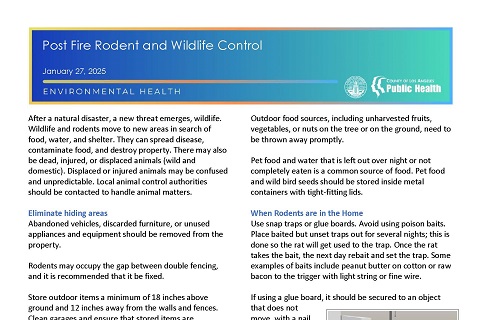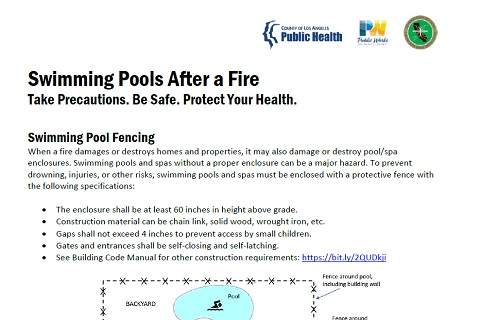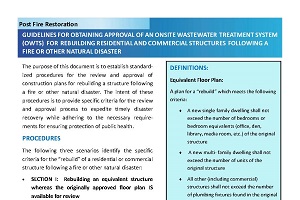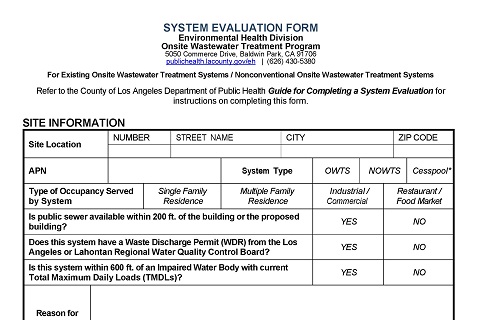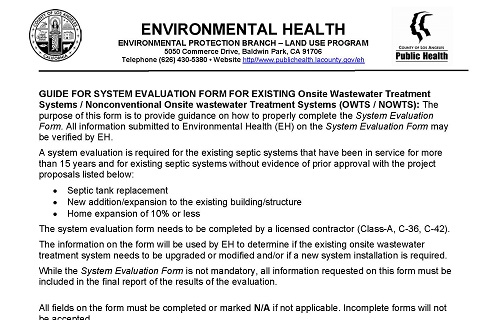
Current Situation
Multiple fires burned throughout Los Angeles County in January 2025 and although they have been contained, we know the impacts will be long-lasting. Air quality remains a concern, particularly due to the ongoing risks of windblown dust and ash. Water quality issues remain in areas impacted by wildfires. Thousands of homes and other structures have been lost. Los Angeles County departments, including Sheriff, Fire, Office of Emergency Management, Public Works and Public Health, work together to provide comprehensive services so those affected by the wildfires have the information they need.
Once local officials have cleared the area and allowed entry, individuals entering previously evacuated, or fire damaged areas should take precautions to protect their health and safety.
For a comprehensive list of information related to active wildfires and services being provided by the County of Los Angeles, visit https://www.lacounty.gov/emergency/.
Health Officer Orders
On January 10, Public Health declared a declared a local health emergency in Los Angeles County and issued an order temporarily banning the use of air blowing devices, like leaf blowers (Revised 1-23-25). The recent strong winds and fires have caused hazardous air quality, increased ash, and debris, and disrupted essential health services. Ash is like a fine, dangerous dust that can be inhaled deep into the lungs and can cause major problems everywhere it lands. It’s not just dirt.
These devastating fires throughout Los Angeles County have burned and destroyed thousands of residences and other structures. The fire debris and ash that resulted from the residential and other structural fires may contain asbestos, heavy metals, and other hazardous substances. The fire debris and ash pose significant threats to public health through inhalation of dust particles and contamination of drinking water supplies. Accordingly, improper handling of fire debris and ash can expose persons and workers to toxic materials, and improper transport and disposal of fire debris can spread hazardous substances throughout the community.
On Wednesday, January 15, the County’s Health Officer has issued an order that prohibits the clean up and removal of fire debris and ash in the burned residential and business areas of the County until a hazardous materials inspection at the property is conducted. This Order is necessary to protect the health and safety of individuals from toxic substances in these areas. There will be additional information forthcoming regarding the fire debris and ash evaluation and removal process as the County moves into the recovery phase of this tragic disaster.
On January 23, the County Health Officer revised the Order prohibiting the use of power air blowers throughout the County. The Order now limits the prohibition of the use of power air blowers, such as leaf blowers, to only within the Palisades and Eaton Wildfire Perimeter Areas as defined by the CAL FIRE and The Wildland Fire Interagency Geospatial Services (WFIGS) Group. This revised Order remains in effect until the County Health Officer determines that fire recovery conditions have progressed to a point, where use of air propelling devices will not negatively impact the health of residents and persons working in those areas.
Although power air blowers may be used in all areas of the County of Los Angeles that are outside of the Palisades and Eaton wildfire perimeters, in areas where concerning amounts of ash and dust are still present, the County Health Officer recommends that individuals consider alternatives to the use of power air blowers, for example, gentle sweeping followed by wet mopping or HEPA vacuums, to collect and remove them. Individuals cleaning fire-related ash and dust should wear respiratory, eye and skin protection to limit contact with hazardous materials that may exist within the ash or dust.

News & Updates
-
January 23, 2025REVISED Health Officer Order Limits Prohibition of Use of Power Air Blowers, Including Leaf Blowers, to Palisades and Eaton Wildfire Perimeter Areas Only
-
January 23, 2025Windblown Dust and Ash Advisory
-
January 23, 2025Smoke Advisory - Unhealthy Air Quality Declared due to Hughes Wildfire
-
January 19, 2025Windblown Dust and Ash Advisory
-
January 17, 2025Ocean Water Advisory Due to Fire Runoff Contamination Extended - Avoid Water Contact from Surfrider Beach to Dockweiler Beach at World Way
-
January 15, 2025Health Officer Issues Order for Safe Removal, Transport, and Disposal of Fire Debris
English | Español -
January 14, 2025Windblown Dust and Ash Advisory
English | Español -
January 11, 2025Smoke Advisory Extended - Unhealthy Air Quality Declared due to Multiple Wildfires
English | Español -
January 10, 2025Local Health Emergency Declared Due to Critical Fire Events and Windstorm Conditions - Health Officer Issues Order Prohibiting Use of Power Air Blowers, Including Leaf Blowers, to Reduce Health Risks from Fire Ash and Smoke
English | Español -
January 10, 2025Smoke Advisory Extended - Unhealthy Air Quality Declared due to Multiple Wildfires English | Español
-
January 9, 2025Ocean Water Advisory Due to Fire Runoff Contamination
-
January 8, 2025Smoke Advisory - Unhealthy Air Quality Declared due to Multiple Wildfires
English | Español -
January 7, 2025Smoke Advisory Extended - Unhealthy Air Quality Declared due to Multiple Wildfires
-
Los Angeles County Water Works District NO 29, MalibuDo Not Drink/Do Not Boil Notice - January 10, 2025
-
Los Angeles Department of Water and PowerDo Not Drink/Do Not Boil Notice - January 10, 2025
-
Las Flores Water CompanyDo Not Drink/Do Not Boil Notice - January 9, 2025
-
Rubio Cañon Land and Water AssociationDo Not Drink/Do Not Boil Notice - January 8, 2025
-
Lincoln Avenue Water CompanyDo Not Drink/Do Not Boil Notice - January 8, 2025
Do Not Drink/Do Not Boil Notice - January 14, 2025 -
Pasadena Drinking Water SystemDo Not Drink/Do Not Boil Notice - January 13, 2025
Frequently Asked Questions
Generally, a property owner is responsible for ensuring that rental housing units are maintained in a manner that complies with health and safety standards. For wildfire ash and debris in or around your rental housing unit, the property owner is responsible for taking the necessary steps to remove the fire related ash and debris in a safe manner. You may request that your landlord remove the fire related ash and debris, or you may follow the guidance provided by Public Health for Safe Cleaning. For additional information see the Department of Consumer and Business Affairs - After the Disaster Information for Landlords and Tenants and the California Department of Justice's Know Your Rights as a California Tenant.
- Environmental Consultants: These specialists can conduct environmental assessments and are trained to identify hazardous materials. They are often certified by recognized trade organizations.
- Industrial Hygienists: Certified industrial hygienists (CIH) specialize in identifying and controlling environmental hazards in both workplace and residential settings. They can assess for contaminants and recommend and conduct cleanup activities.
- Asbestos Inspectors: They are specifically trained and certified to inspect for conduct asbestos and must follow local and federal regulations, such as those established by the EPA or Occupational Safety and Health Administration (OSHA).
- Lead Risk Assessors: Certified lead risk assessors evaluate properties for lead hazards, particularly in homes built before 1978, when lead-based paints were banned in the U.S. They typically have specialized training and certification.
If you plan to file an insurance claim, please note that some insurance companies may have a list of and hire certified professionals to assess your property as part of the claims process. Their assessment will identify affected areas and recommend actions for addressing any hazards.
- Understand that asbestos is a serious issue, and it's good that you're being cautious
- Popcorn ceilings installed before the 1980s may contain asbestos. If your ceiling was installed after that, the chances of asbestos being present are much lower.
- Avoid disturbing the ceiling or cleaning it without first assessing whether it contains asbestos. Disturbing materials with asbestos can release harmful fibers into the air.
- Hire a qualified professional to inspect the ceiling for asbestos if installed before the 1980‘s. They can assess the risks and recommend the safest course of action.
- If cleaning is necessary, consider specialized cleaning services that can safely remove soot from the ceiling without disturbing any potentially hazardous materials.
You can also hire an Environmental Consultant to assess the property and make recommendations.
Public Health strongly warns against sifting through fire debris, as it may pose significant health risks. Doing so may expose you to hazardous materials, sharp objects, or other harmful substances that may be present in the fire debris and ash that could lead to injuries, skin irritation, or respiratory issues. If you must sift through fire debris, take these safety precautions:
- Protect Your Lungs: Wear N95 or P-100 respirators are highly recommended as they filter out at least 95% of airborne particles, offering better protection compared to regular or dust masks, bandanas, wet cloths, or other cloth masks.
- Proper Fit: Make sure the mask fits snugly over your nose and mouth, without gaps, for effective protection.
- Wear Additional Protective Equipment: Wear gloves to protect your hands, goggles to protect your eyes, long-sleeved shirts and long pants to protect your arms and legs, and sturdy closed-toe shoes to protect your feet. Protective clothing or a disposable suit can also help reduce the risk of cuts or exposure to hazardous materials getting on your skin.
- Take Breaks: Monitor your health and how you feel. Regular breaks in a clean area can help reduce fatigue and exposure to harmful particles.
- Practice Good Hygiene: Be sure to wash your hands and any clothing thoroughly after sifting through debris. To avoid contaminating your car, change clothes or remove your protective suit before getting in.
- Goggles – may be reused if properly cleaned with soap and water before reusing
- N95 masks – are not intended to be reused and should be replaced when wet or soiled
- Tyvek Suit – are not intended to be reused and should be replaced when damaged or contaminated by ash or physical contaminants
- Disposable gloves – are not intended to be reused
- Disposable shoe covers – are not intended to be reused
Air purifiers are not being provided by Public Health to the public. If you already have one, please refer to the Air Purifier guidance. If you decide to purchase one, consider the following:
- Air Purifiers:
- Choose HEPA Filters: Look for air purifiers with High-Efficiency Particulate Air (HEPA) filters, which can trap 99.97% of particles as small as 0.3 microns, including smoke.
- Consider Activated Carbon Filters: These help remove gases and odors, improving indoor air quality by removing volatile organic compounds (VOCs) present in smoke.
- Room Size: Make sure the air purifier is appropriate for the size of the room. Check the Clean Air Delivery Rate (CADR) to ensure it can effectively purify the air in your space which is measured in cubic feet per minute (CFM). The American Society of Heating, Refrigerating and Air-Conditioning Engineers (ASHRAE) recommended that homes have a 1/3 air changes per hour under normal conditions, during wildfire events, you might consider increasing to 2 to 4 air changes per hour.
- Placement: Position the air purifier in frequently used areas, ideally near windows or doors where smoke might enter. Make sure it's away from obstructions to maximize airflow.
- Regular Maintenance: Change filters more frequently, regularly clean the unit to maintain efficiency.
- HVAC Systems:
- Use MERV-rated Filters: Upgrade to filters with a Minimum Efficiency Reporting Value (MERV) rating of at least 13, provided your system can accommodate them. If your system cannot handle that level, opt for the highest MERV rating possible. Consulting an HVAC technician is advisable if you're unsure. This helps captures smaller particles and significantly improves indoor air quality.
- Consider Activated Carbon Filters: Combining a higher MERV rating with activated carbon filters can effectively remove gases and odors, further enhancing air quality by removing volatile organic compounds (VOCs) found in smoke.
- Air Duct Cleaning: Consider having your air ducts cleaned to remove any accumulated debris, which may include ash and soot, and ensure better airflow.
- Run the System Continuously: Consider running the fan on your HVAC system continuously on “recirculate” to help filter the air, rather than it cycling on and off.
- Seal Leaks: Check for and seal any leaks in your ductwork to prevent unfiltered outdoor air from entering.
- Ventilation Control: During high smoke events, minimize the use of outside air intakes and close windows and doors to reduce smoke infiltration.
Consider utilizing HVAC Systems or combining them with the air purifier to improve the air quality.
More information about the larger-scale cleanup efforts for Phase 1 and Phase 2 fire debris removal will be shared as it becomes available. These efforts typically include strategies to reduce risks to workers, the public, and the environment during the cleanup and recovery process.
Property Destroyed or with Significant Damage
If Phase 1 and 2 of fire debris removal and cleanup have not been completed, the area remains hazardous due to unstable structures, sharp metal, and ash with potentially toxic substances.
Fire debris, soot (fine, black powdery substance that forms when things burn) and ash contain harmful substances like dioxins, polycyclic aromatic hydrocarbons “PAHs”, and heavy metals. They can lead to a range of health impacts, including skin and lung irritation, shortness of breath, worsen conditions like asthma, potential exposure to carcinogens, and other short-term and long-term medical conditions. The risks depend on exposure levels and individual health.
If entering before cleanup: wear a properly fitted N95 mask, safety goggles, gloves, long sleeves and pants, sturdy shoes, and ideally a disposable Tyvek suit and shoe covers. Avoid unstable structures, sharp objects, and hazardous debris. Inspect areas cautiously, as hazards like broken glass, exposed nails, or weakened structures may not be immediately visible. Carry a flashlight and stay alert for potential slip-and-fall risks or overhead hazards like loose beams.
Move slowly and carefully to avoid disturbing ash. Lightly spray debris with water before handling and use tools (e.g., tongs) instead of bare hands. Ensure good ventilation if indoors. Try not to get ash and soot in your car. Disposable items can be taken off, put into a plastic bag, and disposed of in the regular trash.
Afterward, wash hands, change clothes, and shower immediately.
For salvageable personal items, clean them thoroughly with soap and water before bringing them indoors. If you’re unsure whether an item is contaminated, place it in a sealed bag or container until it can be properly cleaned.
Children, pregnant individuals, and pets should avoid the area until hazards are fully mitigated.
Do not attempt to remove hazardous materials yourself, an improper handling and disposing of these materials can release hazardous chemicals, fibers, or particles into the air. Certified specialists must handle and dispose of these materials in compliance with all local and federal regulations, including OSHA and EPA guidelines, to prevent health risks and legal penalties.
Right now in Phase 1 of the Private Property Debris Removal, the U.S. EPA certified field teams, inspect properties and safely remove, and dispose household hazardous materials in compliance with all local and federal regulations. Some identifiable asbestos containing items may also be removed, but full clearance isn’t achieved until Phase 2 (debris removal) is complete. Check the U.S. EPA Status Map for progress updates.
- Once a property clears Phase 1, owners must choose between:
- Opting in for free cleanup by the U.S. Army Corps of Engineers, OR
- Opting out and hiring an approved contractor to remove the remaining fire debris, including fire ash and soil, following all safety rules, and regulations.
You should not attempt to dispose of ash and debris from a destroyed or severely damaged property on your own. The cleanup process is divided into two phases, managed by different agencies. Phase 1 household hazardous debris removal is free, currently underway, and managed by the U.S. Environmental Protection Agency (EPA).
Properties must pass an EPA inspection and receive Phase I clearance before moving to Phase 2.
- Phase 2 fire debris removal – after Phase 1 clearance, property owners much choose to either:
- Opting in – for free cleanup by the U.S. Army Corps of Engineers, OR
- Opting out – and hiring an approved contractor to remove the remaining fire debris, including fire ash and soil, following all safety rules, and regulations.
Do not attempt to remove asbestos or lead yourself.
During Phase 1, the U.S. EPA removes visible asbestos and easily identifiable asbestos-containing items. Full clearance occurs in Phase 2, when all remaining debris—including metals, hazardous trees, fire ash, foundation debris, and contaminated soil—is removed and disposed of per regulations.
Do not attempt to handle, move, or store hazardous materials yourself. Improper handling can release toxic chemicals, fibers, or particles into the air.
Right now, in Phase 1 of the Private Property Debris Removal, the U.S. EPA certified field teams, inspect properties and safely handle, transport, and dispose of household hazardous materials in compliance with all local and federal regulations.
Your home may have fire damaged or destroyed lithium-ion batteries, lithium-ion battery energy storage systems, and electric and hybrid vehicles. These batteries should be considered extremely dangerous, even if they look intact. Lithium-ion batteries can spontaneously re-ignite, explode, and emit toxic gases and particulates even after the fire is out.
- Do not touch fire-damaged products with lithium-ion batteries – they can ignite.
- Do not start, move, tow, or charge a fire-damaged electric/hybrid vehicles (EV, PHEV, HEV).
- Do not use or start a fire-damaged residential energy storage or house battery.
- Do not enter enclosed spaces with lithium-ion battery products.
- Do call the U.S. EPA hotline at 1-833-R9-USEPA (1-833-798-7372) if you encounter a lithium-ion battery while re-entering your property and/or are unsure if a lithium-ion battery was damaged.
The U.S. Environmental Protection Agency (EPA) has been assigned by the Federal Emergency Management Agency (FEMA) to remove lithium-ion batteries affected by the Los Angeles County wildfires.
For more info, click here for their Los Angeles Wildfires: Lithium-ion batteries burned by wildfires factsheet.
Inspect for visible damage, such as cracks or melted parts and document with photos. Once Phase 2 debris removal is complete and your property is cleared to rebuild, hire a licensed contractor for repairs. Have the water tested for contaminants, as wildfires can introduce harmful bacteria and chemicals.
Stagnant water in pools, fountains, or other areas can attract mosquitoes and spread diseases like West Nile Virus. To prevent this, use mosquito dunks or introduce mosquito fish to control larvae.
Submit a Service Request Application with inspection reports detailing the condition of your septic tank, dispersal system, and related components. If the system is damaged, repairs or upgrades may be required to meet current codes. Obtain approvals from relevant agencies, including the Onsite Wastewater Treatment System Program and provide site plans showing septic system locations and proper spacing from structures and water sources.
To obtain a Water Availability Letter, submit proof of your water source, such as a utility bill, well report, or service letter from a potable water hauler. The Drinking Water Program will review your application and may require additional testing or inspections to confirm water safety. Contact your local health department for application procedures and assistance.
Fire can damage the pool’s structure, deck, equipment and enclosure. Once your property is cleared for rebuilding, follow the steps outlined in the LACDPH Swimming Pools After a Fire guidance. Use professional services for inspection and repairs, and ensure compliance with local codes before reopening.
For questions about rebuilding or repairing pools or spas after a fire, contact the Environmental Health Recreational Waters Program at (626)430-5360 or email rhealth@ph.lacounty.gov.
If your pool or spa enclosure was damaged or destroyed, the U.S. EPA or the U.S. Army Corps may install a temporary enclosure to protect workers during Phase 1 and 2 of Private Property Debris Removal.
The swimming pool or spa was likely impacted by smoke, soot, or ash. Do not use it until completing the steps outlined in the LACDPH Swimming Pools After a Fire guidance. Contact your local health department's Recreational Waters Program at (626)430-5360 or email rhealth@ph.lacounty.gov if you have questions.
A process for approval of temporary housing, such as RVs or mobile homes, for an owner to be on or near their property in the fire perimeter area is being developed. Typically, the process requires approval for wastewater disposal, either by utilizing existing septic systems or contracting with a licensed sewage pumping service, submitting the necessary applications and inspection reports to the Land Use Program, ensuring potable water is available, and adhering to zoning or planning requirements for temporary structures.
To apply for rebuilding permits, submit site plans, floor plans, and inspection reports. Include details about the proposed structure and its compatibility with existing infrastructure like septic systems. Provide proof of prior permits for the original structure, if available, and consult local agencies to ensure all documentation meets their requirements. Additional feasibility studies may be needed for expanded floor plans.
Structural integrity should be assessed by a licensed professional who can evaluate foundations, walls, and critical support structures. They will check for cracks, warping, or weakened materials caused by extreme heat. Obtain a detailed report from the inspection to determine necessary repairs or whether a complete rebuild is required. Do not enter structures that appear unstable until cleared by a professional.
Local Assistance Centers and Disaster Recovery Centers offer resources, including financial aid, housing assistance, and rebuilding guidance. Public health officials at these centers can provide information on environmental safety and permits. Programs like FEMA disaster assistance or state grants may also be available.
Financial assistance options include insurance claims, the Emergency Prescription Assistance Program (EPAP) for uninsured individuals, and disaster relief funds. Additionally, nonprofit organizations may provide support for rebuilding costs. Contact local recovery centers or public health agencies for guidance on eligibility and applications.
Use fire-resistant materials, such as Class A roofing and ember-resistant vents. Incorporate defensible space by clearing flammable vegetation around structures and installing noncombustible barriers. Follow updated building codes for fire-prone areas and consult professionals specializing in fire-safe design.
Use soil amendments, such as compost or mulch, to stabilize exposed soil and reduce erosion. Avoid using ash as fertilizer, as it may contain harmful contaminants. Plant fire-resistant vegetation and cover bare areas with wood chips or clean soil. Consult local resources for erosion control measures suited to your property.
Take clear photographs of all damaged areas and belongings, making a list of items lost or destroyed. Include details such as purchase dates, values, and receipts if available. Notify your insurance provider immediately to start the claims process and provide them with requested documentation. Keep copies of all correspondence and records for your claim. For more resources related to insurance, including Tips for Wildfire Claimants, visit the California Department of Insurance’s Wildfire Resources webpage.
Properties with Minimal or No Structural Damage
These are valid concerns, as proximity to burn areas before hazardous materials (Phase 1 by US EPA) and fire debris (Phase 2) removal is complete can present health and safety risks, even if your home or school is intact. Individuals with underlying health conditions that can be exacerbated by exposures to soot, ash, and fire debris may want to consult with their medical provider for guidance on when it is advisable to return and ways to reduce your risk of exposure.
During Phase 1 of the debris removal process, which is currently underway, the US EPA is going through fire damaged neighborhoods to safely remove and dispose of visible hazardous materials from burned properties. If you are living near areas with significant fire debris or burned buildings nearby, it is prudent to avoid being outdoors near these properties while hazardous material ls are being removed, even though this process should not result in significant disturbance of ash and other fire debris.
If you’re returning to a home in an area with significant fire debris or burned buildings nearby, it may be advisable to wait until all the remaining fire debris has been removed from nearby burned properties before moving back in. Debris removal in Phase 2 may stir up ash and soot, which may affect air quality. Steps will be taken in the process to reduce this risk.
Stay informed about the timeline for debris removal. Follow the U.S. EPA’s Status Map to track help you track the progress of their hazardous material removal and see the status of work done at properties. Statuses are updated nightly.
Lastly, as you spend time in the area or reoccupy your homes, continue to monitor your health and the health of your family. Symptoms like coughing, eye irritation, or headaches could be linked to lingering contaminants. If you experience coughing, wheezing, eye irritation, or difficulty breathing, stop and get fresh air or good ventilation right away. If skin irritation, wash exposed skin and change clothes if they have been contaminated. For persistent or severe symptoms, consult a healthcare provider. Vulnerable individuals should take extra precautions, take steps to reduce their potential exposure, and talk with their healthcare provider.
Wear personal protective equipment (PPE) and clothing to protect yourself – including goggles, an N95 or P100 respirator, gloves, long pants, long sleeve shirt, and closed toe shoes.
Walk exterior of home and look for obvious signs of fire and smoke damage. Check for signs of smoke and ash buildup on the exterior siding, doors, and windows. Make a note, photograph these areas, and document them for your insurance carrier prior to undertaking any remediation or cleanup.
Walk the entire interior of home and determine the extent of smoke, soot and ash contamination in each room and air vent. Remove from the home to minimize odor problems that could mask smoke odors. If there is a noticeable smoke odor, then you likely have some level of smoke damage. In cases where there is no visible soot or ash, a wipe test, where you wipe a wall or windowsill, confirming no soot or ash, can help determine that there was not significant intrusion of dangerous ash or soot. For situations involving light soot or ash on horizontal surfaces and/or visible airborne particulate and/or noticeable smoke odors, a more thorough cleaning is recommended.
If you notice signs of significant soot, smoke residue, or odors in your home, it’s important to assess whether professional cleaning is necessary.
Do not turn on your HVAC system until the bulk of the soot/ash has been cleaned up. Operating the system prior to removing the bulk of the soot/ash throughout the home will only result in spreading the particulate and re-contaminating surfaces that have already been cleaned.
If you’re filing an insurance claim, they may send a field adjuster to do an assessment and may have firms they would recommend or firms they contract with for this type of work.
The following guidelines are helpful when selecting a professional cleaning or restoration service contractor for smoke, soot, and ash restoration.
First, if you’re filing an insurance claim, check with your insurance company to see if they have firms they would recommend or firms they contract with for this type of work. If you end up looking for a professional cleaning contract yourself, confirm that the contractor is properly licensed by the State or County and has the required bonding and liability insurance coverage. Additionally, you can ask the contractor if they work with your insurance company and verify this with your insurance agent.
You may also want to check references, check with the Better Business Bureau, and/or follow up with past customers to ask about their experiences with a particular contractor prior to signing a contract.
It is also essential to request certifications from the contractor, including company and employee certifications from organizations like the Institute of Inspection Cleaning and Restoration Certification (IICRC) and the Restoration Industry Association (RIA).
Before agreeing to start or paying for any work, you should also obtain a detailed, written estimate of the work to be done and the schedule for doing it from the contractor, and do not proceed without one. Make sure to review and understand the terms of the contract and what is required by you, such as payment of your insurance deductible. While indoor testing can be helpful in some circumstances, it is important to know that there are no laboratory tests that can determine if your property is “safe”, and all lab results must be evaluated in context with environmental conditions in and around your property. It is best to avoid contractors who fail to provide specific cost and schedule details in the contract.
While indoor testing can be helpful in some circumstances, it is important to know that there are no laboratory tests that can determine if your property is “safe”, and all lab results must be evaluated in context with environmental conditions in and around your property.
Smoke can cause significant physical damage as well as health issues, even if the home is not destroyed or burned by fire. Smoke, soot (fine, black powdery substance that forms when things burn), and ash contain fine particles and toxic substances that can lead to a range of health impacts, including skin and lung irritation, shortness of breath, worsen conditions like asthma, potential exposure to carcinogens, and other short-term and long-term medical conditions. They may also include harmful chemicals such as dioxins, polycyclic aromatic hydrocarbons (PAHs), and heavy metals. Protect yourself by wearing a properly fitted N95 mask, goggles, gloves, closed toes shoes, and long sleeves and pants. Avoid disturbing ash unnecessarily and ensure good ventilation when cleaning indoor spaces. Wash your hands, clothes, and any exposed skin thoroughly after cleanup.
Individuals, such as children, the elderly, pregnant individuals, or those with respiratory conditions, should take extra precautions or avoid reentering the home until it has been cleaned. And everyone should avoid contact with outdoor areas that have not been cleaned. Keep children and pets away from ash-covered areas to prevent ingestion or inhalation.
To avoid stirring up ash by gently using a damp cloth, mop, or sponge instead of sweeping or vacuuming. If you need to handle larger debris, lightly mist the area with water to keep dust from becoming airborne. Lightly mist with water before gently moving fire debris or items in ash. Avoid using dry sweeping or leaf blowers, as these can disperse ash and soot. Use a HEPA-filter vacuum for fine particles if vacuuming is necessary.
Always wear protective gear, including an N95 or P100 respirator, googles, heavy-duty gloves, long sleeves and pants, and sturdy closed-toe boots. This gear minimizes direct skin contact, protects the eyes, and reduces inhalation of toxic particles. Before beginning work, wet down debris and clean floors and surfaces with a damp cloth or cleaning pad to reduce airborne particles, and avoid touching sharp or broken materials directly. Remove any visible soot/ash or debris from exterior siding, doors, doorsills, windows, and windowsills using a garden hose and damp cloths first. Be cautious of structural instability or hidden hazards, such as nails or glass in any damaged area. Wash your hands thoroughly after handling debris, and remove and clean your clothing separately from other laundry to prevent cross-contamination.
If hazardous materials are present, you should not attempt cleanup without professional assistance. Asbestos and lead require certified specialists for safe removal, as disturbing these materials can release dangerous fibers or particles into the air. Testing by licensed professionals can confirm the presence of these hazards. Ensure compliance with all local and federal regulations, including OSHA and EPA guidelines, to avoid potential health risks and legal penalties. Keep children and vulnerable individuals away from affected areas until all hazards are mitigated.
Ash and soot should be handled with extreme caution due to the risk of hazardous particles, such as heavy metals or asbestos. Seal them in durable plastic bags, double-bagging if possible, to minimize the release of particles during transport. Place sealed bags in covered trash bins to prevent them from being disturbed by wind or animals.
Wear gloves and an N95 mask to prevent exposure to particles. Use a mild detergent and warm water to clean soot from non-porous surfaces, such as metal or plastic furniture. Rinse thoroughly and dry completely to avoid residue buildup. For porous materials like cushions, consider professional cleaning or replacement.
Use a hose or bucket of water to gently rinse off ash before scrubbing. Use a damp cloth and cleaning pad to clean windowsills and doorsills. Clean glass surfaces with a vinegar and water solution to remove streaks and residue. Replace or clean screens with soapy water, ensuring they are thoroughly rinsed and dried before reinstallation.
Hose down the area to minimize airborne particles, and use a stiff broom to sweep ash into piles. Avoid washing ash into storm drains, as this can harm the environment. Dispose of collected ash in sealed bags in your regular trash.
- Wood Furniture: Gently wipe down with a damp cloth to remove soot. Use a wood cleaner or polish designed for fire-damaged wood to restore the finish.
- Upholstery: For fabric furniture, using a HEPA-vacuum just above the fabric followed by steam cleaning can help remove soot and odors. If the upholstery is leather, it may need specialized cleaning products to remove smoke stains and odors. For heavier smoke damage or delicate fabrics, it’s best to consult a professional cleaner.
While wearing protective gear outdoors and away from the home, gently shake out visible soot outdoors before washing clothing and linens. Wash items in small loads with detergent. Some suggest adding a cup of white vinegar or other deodorizer to neutralize odors. Repeat the washing process if the smell of smoke persists. Do not use a dryer until all smoke odors are removed, as heat can set the smell permanently. Depending on the amount of smoke damage in your washer or dryer, consider cleaning them inside or having them professionally services and cleaned before using them.
Immediately turn off and unplug any electronic devices that may have been exposed to heat or smoke. Use a soft cloth to wipe away soot and ash. Avoid using cleaning products that could damage the device.
For appliances like toasters, blenders, or coffee makers, dampen a cloth with water (and a tiny bit of dish soap for greasy spots) to wipe down the outer surfaces. Avoid getting moisture inside the appliances. If in doubt, consider replacing it.
If the device was exposed to water (from firefighting efforts) or has significant soot or ash contamination, consider replacing it or having it professionally serviced and cleaned. It’s often safer to have electronics professionally inspected before attempting to use them again, as the heat from a fire can cause internal damage that’s not visible.
Use a mild soap solution and a soft cloth to clean metal items and jewelry. If they are tarnished or heavily sooted, a jewelry cleaner or a paste made of baking soda and water can be used. If the item is valuable or delicate, it’s best to take it to a professional jeweler for thorough cleaning.
If photos or keepsakes are only slightly damaged, carefully wipe away soot with a soft brush. If they’re wet or too smoky, place them in a plastic bag and freeze to prevent further damage until you can clean or restore them properly. For valuable or sentimental items, consult with a professional photo restoration service to ensure proper cleaning.
Wash vehicles using a gentle hose spray to remove loose ash, then use a mild detergent and water to clean surfaces. Avoid scrubbing dry ash, as it can scratch paint. Rinse thoroughly and check ventilation intakes to remove accumulated debris. If ash has entered the vehicle’s interior, vacuum with a HEPA filter and wipe surfaces with a damp cloth.
Wash toys and equipment with a mild detergent and warm water, ensuring no residue is left behind. Replace sand in sandboxes, as ash and soot are difficult to remove effectively. Keep children away from outdoor play areas until cleanup is complete and confirm that no ash remains on surfaces.
Collect burned vegetation and yard debris in sealed bags or containers. Avoid burning debris, as it can release harmful particles. Contact your local waste management agency for guidelines on disposal or drop-off at designated facilities. Ensure ash and debris are not placed in green waste bins unless explicitly allowed.
Keep your doors and windows closed on windy days, when the air quality is poor/unhealthy, and during debris removal activities. Use HEPA air purifiers in frequently used rooms to reduce smoke particles indoors. Replace HVAC filters with a MERV 13 or higher rating and run the system on recirculate mode. Keep windows and doors closed until outdoor air quality improves, and avoid activities that generate indoor smoke, such as burning candles or frying food.
If you experience coughing, wheezing, eye irritation, or difficulty breathing, stop cleaning and get fresh air or good ventilation right away. Wash exposed skin and change clothes to remove contaminants. For persistent or severe symptoms, consult a healthcare provider. Vulnerable individuals should take extra precautions, take steps to reduce their potential exposure, and talk with their healthcare provider.
Testing soils in urban gardens is always a good idea. According UC Cooperative Extension’s Produce Safety After Urban Wildfire guidance document, “After a wildfire, you can check for soil contamination by collecting soil samples from your garden and sending them to a lab. Before taking samples, draw a map of your food growing area and label it with the spots where you took your samples from. Mapping of your food growing area and soil sample spots is a good idea so you can correlate your test results, and identify spots of concern in case you need to do more testing, and guess what? It can save you time, money, and help you understand on the ground conditions!
Search UC Cooperative Extension County Master Gardener Program webpages for regional analytical soil labs lists; simply search ‘UCCE + the County’s Name + Master Gardener Program.’ Ask your lab for a heavy metals panel that includes lead, cadmium, arsenic, nickel and mercury. Heavy metals tests typically cost under one hundred dollars per sample. Tests for dioxin and other organic chemicals that may be present in smoke can be hundreds of dollars per sample. If heavy metals are present in your soils, there is a greater chance other contaminants may also be present.
Contaminants detected in post-fire soil testing may have been present there before the fire. You will not know if contaminants are present as a result of fire smoke deposits on your produce or soils unless you have had your soils tested prior to a local fire, or unless you have your produce tested after a nearby fire. See University of California ANR’s guides on Soils in Urban Agriculture: Testing, Remediation, and Best Management Practices for more information. Search for ANR Publication 8552 http://www.anrcatalog.ucanr.edu. Also see: http://ucanr.edu/sites/UrbanAg/ on Food Safety.”
Wildfire ash and soot can settle on soil, plants, and produce. To ensure your homegrown fruits are safe, first check for visible ash in topsoil, plants, and trees. While wearing protective gear, pre-rinse your produce outside with a hose or bucket of clean water to remove soil and ash. Wash hands thoroughly before handling produce inside. Remove the outer leaves of lettuce or leafy greens. Rinse and rub produce well under cool running water; peel before cooking or serving. Soak deeply veined greens like kale and fuzzy fruits like peaches in a 10% white vinegar solution to remove soil particles. Avoid root crops that grow in the soil like carrots or potatoes as they absorb more contaminants. Avoid planting crops in contaminated soil. Properly washed fruits from trees are safe to eat. For more information refer to the LACDPH Guidance on Eating Produce from a Home Garden.
Wildfires can leave behind ash, soot, and harmful contaminants like heavy metals and chemicals in the soil. Review UC Cooperative Extension’s Produce Safety After Urban Wildfire guidance document more info and recommendations.
Heavily ash-covered soil may require professional testing to determine safety and more specific remediation steps.
If you’re concerned about soil contamination, consider testing it for contamination and avoid disturbing the soil to prevent harmful particles that may be present from becoming airborne. Look for visible ash or unusual residues on the soil surface, and limit contact by keeping children and pets away from the area. If you need to handle or turn the soil, wear protective gear such as gloves, an N95 mask, and long-sleeved clothing. Cover bare soil with mulch, tarps, or ground cover to reduce dust and erosion.
Avoid using ash as fertilizer, especially if the fire burned synthetic materials, which include harmful residues.
If you plan to garden or use the soil for other activities, consider building raised beds or containers to create a barrier between potentially contaminated soil and the clean soil plant roots. Adding compost, manure, and peat moss to your soil may decrease chemical absorption into produce. Covering bare soil with wood chips, grass clippings, compost and more clean soil can also decrease exposure.
The following guidelines are helpful when selecting a professional cleaning or restoration service contractor for smoke, soot, and ash restoration.
First, if you’re filing an insurance claim, check with your insurance company to see if they have firms they would recommend or firms they contract with for this type of work. If you end up looking for a professional cleaning contract yourself, confirm that the contractor is properly licensed by the State or County and has the required bonding and liability insurance coverage. Additionally, you can ask the contractor if they work with your insurance company and verify this with your insurance agent.
You may also want to check references, check with the Better Business Bureau, and/or follow up with past customers to ask about their experiences with a particular contractor prior to signing a contract.
It is also essential to request certifications from the contractor, including company and employee certifications from organizations like the Institute of Inspection Cleaning and Restoration Certification (IICRC) and the Restoration Industry Association (RIA).
Before agreeing to start or paying for any work, you should also obtain a detailed, written estimate of the work to be done and the schedule for doing it from the contractor, and do not proceed without one. Make sure to review and understand the terms of the contract and what is required by you, such as payment of your insurance deductible. While indoor testing can be helpful in some circumstances, it is important to know that there are no laboratory tests that can determine if your property is “safe”, and all lab results must be evaluated in context with environmental conditions in and around your property. It is best to avoid contractors who fail to provide specific cost and schedule details in the contract.
Small cracks or burns on walls and ceilings can often be repaired with spackling paste or fire-resistant sealants. Clean soot and smoke residue from affected areas before repainting. For larger repairs, hire a licensed contractor to assess and address structural issues.
Consult local agricultural extension offices for advice on erosion control and soil recovery. Use fire-resistant plants and ground covers to reduce future fire risks. Apply soil amendments, such as compost or mulch, to stabilize the soil and improve nutrient content. Avoid using ash as a soil amendment, as it may contain harmful substances.
Inspect fencing and outdoor structures for signs of warping, charring, or structural instability. Replace damaged wood fencing with fire-resistant materials like metal or composite. Clean soot and ash from undamaged structures with a mild detergent and water and repaint if necessary.
Disaster Resource Centers (DRCs) and federal programs like FEMA may provide financial aid for repairs. Check with state and local agencies for grants or low-interest loans targeting wildfire recovery. Homeowners insurance policies may also cover landscaping and fencing repairs, depending on your coverage.
Mold thrives in damp environments, making prompt drying of water-damaged areas essential. Use dehumidifiers and fans to remove moisture, and clean hard surfaces with a solution of 1 cup of bleach to 1 gallon of water. Replace water-damaged drywall, insulation, and carpeting to prevent further mold growth.
Inspect for visible damage, such as cracks or melted parts and document with photos. Once Phase 2 debris removal is complete and your property is cleared to rebuild, hire a licensed contractor for repairs. Have the water tested for contaminants, as wildfires can introduce harmful bacteria and chemicals.
Stagnant water in pools, fountains, or other areas can attract mosquitoes and spread diseases like West Nile Virus. To prevent this, use mosquito dunks or introduce mosquito fish to control larvae.
Submit a Service Request Application with inspection reports detailing the condition of your septic tank, dispersal system, and related components. If the system is damaged, repairs or upgrades may be required to meet current codes. Obtain approvals from relevant agencies, including the Onsite Wastewater Treatment System Program and provide site plans showing septic system locations and proper spacing from structures and water sources.
To obtain a Water Availability Letter, submit proof of your water source, such as a utility bill, well report, or service letter from a potable water hauler. The Drinking Water Program will review your application and may require additional testing or inspections to confirm water safety. Contact your local health department for application procedures and assistance.
Fire can damage the pool’s structure, deck, equipment and enclosure. Once your property is cleared for rebuilding, follow the steps outlined in the LACDPH Swimming Pools After a Fire guidance. Use professional services for inspection and repairs, and ensure compliance with local codes before reopening.
For questions about rebuilding or repairing pools or spas after a fire, contact the Environmental Health Recreational Waters Program at (626)430-5360 or email rhealth@ph.lacounty.gov.
If your pool or spa enclosure was damaged or destroyed, the U.S. EPA or the U.S. Army Corps may install a temporary enclosure to protect workers during Phase 1 and 2 of Private Property Debris Removal.
The swimming pool or spa was likely impacted by smoke, soot, or ash. Do not use it until completing the steps outlined in the LACDPH Swimming Pools After a Fire guidance. Contact your local health department's Recreational Waters Program at (626)430-5360 or email rhealth@ph.lacounty.gov if you have questions.
Permits may be required depending on local zoning laws and the scope of work. Contact your local building department to determine specific requirements. Ensure that any new structures comply with fire-resistant building codes.
Submit a detailed plan to your local water district, including the location and scope of repairs. Ensure repairs use water-efficient and fire-resistant materials where applicable. Some districts may offer rebates for upgrading to more efficient systems during repairs.
Financial and Insurance Support
Take clear photographs of all damaged areas and belongings on your property and next to your property, making any list of items lost or destroyed. Include details such as purchase dates, values, and receipts if available. Notify your insurance provider immediately to start the claims process and provide them with requested documentation. Keep copies of all correspondence and records for your claim. For more resources related to insurance, including Tips for Wildfire Claimants, visit the California Department of Insurance’s Wildfire Resources webpage.
Coverage depends on the specific terms of your policy. Many policies cover landscaping, fences, and detached structures, but limits may apply. Contact your insurance provider to confirm your coverage and discuss filing a claim. For more resources related to insurance, including Tips for Wildfire Claimants, visit the California Department of Insurance’s Wildfire Resources webpage.
Disaster Resource Centers (DRCs) provide resources for property recovery, including guidance on debris removal, financial aid, and cleanup kits. Community organizations may also offer support for environmental recovery efforts.
Wildfires can be traumatic, even if your home is spared. Contact local mental health hotlines or counseling services for support. The Disaster Distress Helpline (1-800-985-5990) provides free, confidential assistance to individuals coping with disaster-related stress.
EVACUATED PROPERTIES WITH NO DAMAGE
Walk exterior of home and look for obvious signs of fire and smoke damage. Check for signs of soot and ash buildup on the exterior siding, doors, and windows. Make a note, photograph these areas, and document them for your insurance carrier prior to undertaking any remediation or cleanup.
Walk the entire interior of home and determine the extent of smoke, soot and ash contamination in each room and air vent. Remove from the home to minimize odor problems that could mask smoke odors. If there is a noticeable smoke odor, then you likely have some level of smoke damage. In cases where there is no visible soot or ash, a wipe test, where you wipe a wall or windowsill, confirming no soot or ash, can help determine that there was not significant intrusion of dangerous ash or soot. For situations involving light soot or ash on horizontal surfaces and/or visible airborne particulate and/or noticeable smoke odors, a more thorough cleaning is recommended.
If you notice signs of significant soot, smoke residue, or odors in your home, it’s important to assess whether professional cleaning is necessary
- Do not turn on your HVAC system until the bulk of the soot/ash has been cleaned up. Operating the system prior to removing the bulk of the soot/ash throughout the home will only result in spreading the particulate and re-contaminating surfaces that have already been cleaned
- If you’re filing an insurance claim, they may send a field adjuster to do an assessment and may have firms they would recommend or firms they contract with for this type of work
The following guidelines are helpful when selecting a professional cleaning or restoration service contractor for smoke, soot, and ash restoration.
First, if you’re filing an insurance claim, check with your insurance company to see if they have firms they would recommend or firms they contract with for this type of work. If you end up looking for a professional cleaning contract yourself, confirm that the contractor is properly licensed by the State or County and has the required bonding and liability insurance coverage. Additionally, you can ask the contractor if they work with your insurance company and verify this with your insurance agent.
You may also want to check references, check with the Better Business Bureau, and/or follow up with past customers to ask about their experiences with a particular contractor prior to signing a contract. It is also essential to request certifications from the contractor, including company and employee certifications from organizations like the Institute of Inspection Cleaning and Restoration Certification (IICRC) and the Restoration Industry Association (RIA).
Before agreeing to start or paying for any work, you should also obtain a detailed, written estimate of the work to be done and the schedule for doing it from the contractor, and do not proceed without one. Make sure to review and understand the terms of the contract and what is required by you, such as payment of your insurance deductible. While indoor testing can be helpful in some circumstances, it is important to know that there are no laboratory tests that can determine if your property is “safe”, and all lab results must be evaluated in context with environmental conditions in and around your property. It is best to avoid contractors who fail to provide specific cost and schedule details in the contract.
Generally, the risk in your home is determined by the extent of smoke damage, ie. the smoke, soot and ash conditions, inside your home. Cleaning up the smoke damage reduces that risk inside. While indoor testing can be helpful in some circumstances, it is important to know that there are no laboratory tests that can determine if your property is “safe”, and all lab results must be evaluated in context with environmental conditions in and around your property.
Smoke damage can cause significant physical damage as well as health issues, even if the home is not destroyed or burned by fire. Smoke, soot (fine, black powdery substance that forms when things burn), and ash contain fine particles and toxic substances that can lead to a range of health impacts, including skin and lung irritation, shortness of breath, worsen conditions like asthma, potential exposure to carcinogens, and other short-term and long-term medical conditions. They may also include harmful chemicals such as dioxins, polycyclic aromatic hydrocarbons (PAHs), and heavy metals. Protect yourself by wearing a properly fitted N95 mask, goggles, gloves, closed toes shoes, and long sleeves and pants. Avoid disturbing ash unnecessarily and ensure good ventilation when cleaning indoor spaces. Wash your hands, clothes, and any exposed skin thoroughly after cleanup.
Individuals, such as children, the elderly, pregnant individuals, or those with respiratory conditions, should take extra precautions or avoid reentering the home until it has been cleaned. And everyone should avoid contact with outdoor areas that have not been cleaned. Keep children and pets away from ash-covered areas to prevent ingestion or inhalation.
If you experience coughing, wheezing, eye irritation, or difficulty breathing, stop and get fresh air or good ventilation right away. If skin irritation, wash exposed skin and change clothes if they have been contaminated. For persistent or severe symptoms, consult a healthcare provider. Vulnerable individuals should take extra precautions, take steps to reduce their potential exposure, and talk with their healthcare provider.
To avoid stirring up ash by gently using a damp cloth, mop, or sponge instead of sweeping or vacuuming. If you need to handle larger debris, lightly mist the area with water to keep dust from becoming airborne. Lightly mist with water before gently moving fire debris or items in ash. Avoid using dry sweeping or leaf blowers, as these can disperse ash and soot. Use a HEPA-filter vacuum for fine particles if vacuuming is necessary.
Always wear protective gear, including an N95 or P100 respirator, googles, heavy-duty gloves, long sleeves and pants, and sturdy closed-toe boots. This gear minimizes direct skin contact, protects the eyes, and reduces inhalation of toxic particles. Before beginning work, wet down debris and clean floors and surfaces with a damp cloth or cleaning pad to reduce airborne particles, and avoid touching sharp or broken materials directly. Remove any visible soot/ash or debris from exterior siding, doors, doorsills, windows, and windowsills using a garden hose and damp cloths first. Be cautious of structural instability or hidden hazards, such as nails or glass in any damaged area. Wash your hands thoroughly after handling debris, and remove and clean your clothing separately from other laundry to prevent cross-contamination.
If hazardous materials are present, you should not attempt cleanup without professional assistance. Asbestos and lead require certified specialists for safe removal, as disturbing these materials can release dangerous fibers or particles into the air. Testing by licensed professionals can confirm the presence of these hazards. Ensure compliance with all local and federal regulations, including OSHA and EPA guidelines, to avoid potential health risks and legal penalties. Keep children and vulnerable individuals away from affected areas until all hazards are mitigated.
Ash and soot should be handled with extreme caution due to the risk of hazardous particles, such as heavy metals or asbestos. Seal them in durable plastic bags, double-bagging if possible, to minimize the release of particles during transport. Place sealed bags in covered trash bins to prevent them from being disturbed by wind or animals.
Wear gloves and an N95 mask to prevent exposure to particles. Use a mild detergent and warm water to clean soot from non-porous surfaces, such as metal or plastic furniture. Rinse thoroughly and dry completely to avoid residue buildup. For porous materials like cushions, consider professional cleaning or replacement.
Use a hose or bucket of water to gently rinse off ash before scrubbing. Use a damp cloth and cleaning pad to clean windowsills and doorsills. Clean glass surfaces with a vinegar and water solution to remove streaks and residue. Replace or clean screens with soapy water, ensuring they are thoroughly rinsed and dried before reinstallation.
Hose down the area to minimize airborne particles, and use a stiff broom to sweep ash into piles. Avoid washing ash into storm drains, as this can harm the environment. Dispose of collected ash in sealed bags in your regular trash.
- Wood Furniture: Gently wipe down with a damp cloth to remove soot. Use a wood cleaner or polish designed for fire-damaged wood to restore the finish.
- Upholstery: For fabric furniture, using a HEPA-vacuum just above the fabric followed by steam cleaning can help remove soot and odors. If the upholstery is leather, it may need specialized cleaning products to remove smoke stains and odors. For heavier smoke damage or delicate fabrics, it’s best to consult a professional cleaner.
While wearing protective gear outdoors and away from the home, gently shake out visible soot outdoors before washing clothing and linens. Wash items in small loads with detergent. Some suggest adding a cup of white vinegar or other deodorizer to neutralize odors. Repeat the washing process if the smell of smoke persists. Do not use a dryer until all smoke odors are removed, as heat can set the smell permanently. Depending on the amount of smoke damage in your washer or dryer, consider cleaning them inside or having them professionally services and cleaned before using them.
Immediately turn off and unplug any electronic devices that may have been exposed to heat or smoke. Use a soft cloth to wipe away soot and ash. Avoid using cleaning products that could damage the device.
For appliances like toasters, blenders, or coffee makers, dampen a cloth with water (and a tiny bit of dish soap for greasy spots) to wipe down the outer surfaces. Avoid getting moisture inside the appliances. If in doubt, consider replacing it.
If the device was exposed to water (from firefighting efforts) or has significant soot or ash contamination, consider replacing it or having it professionally serviced and cleaned. It’s often safer to have electronics professionally inspected before attempting to use them again, as the heat from a fire can cause internal damage that’s not visible.
Use a mild soap solution and a soft cloth to clean metal items and jewelry. If they are tarnished or heavily sooted, a jewelry cleaner or a paste made of baking soda and water can be used. If the item is valuable or delicate, it’s best to take it to a professional jeweler for thorough cleaning.
If photos or keepsakes are only slightly damaged, carefully wipe away soot with a soft brush. If they’re wet or too smoky, place them in a plastic bag and freeze to prevent further damage until you can clean or restore them properly. For valuable or sentimental items, consult with a professional photo restoration service to ensure proper cleaning.
Wash vehicles using a gentle hose spray to remove loose ash, then use a mild detergent and water to clean surfaces. Avoid scrubbing dry ash, as it can scratch paint. Rinse thoroughly and check ventilation intakes to remove accumulated debris. If ash has entered the vehicle’s interior, vacuum with a HEPA filter and wipe surfaces with a damp cloth.
Wash toys and equipment with a mild detergent and warm water, ensuring no residue is left behind. Replace sand in sandboxes, as ash and soot are difficult to remove effectively. Keep children away from outdoor play areas until cleanup is complete and confirm that no ash remains on surfaces.
Collect burned vegetation and yard debris in sealed bags or containers. Avoid burning debris, as it can release harmful particles. Contact your local waste management agency for guidelines on disposal or drop-off at designated facilities. Ensure ash and debris are not placed in green waste bins unless explicitly allowed.
If you experience coughing, wheezing, eye irritation, or difficulty breathing, stop and get fresh air or good ventilation right away. If skin irritation, wash exposed skin and change clothes if they have been contaminated. For persistent or severe symptoms, consult a healthcare provider. Vulnerable individuals should take extra precautions, take steps to reduce their potential exposure, and talk with their healthcare provider.
Testing soils in urban gardens is always a good idea. According UC Cooperative Extension’s Produce Safety After Urban Wildfire guidance document, “After a wildfire, you can check for soil contamination by collecting soil samples from your garden and sending them to a lab. Before taking samples, draw a map of your food growing area and label it with the spots where you took your samples from. Mapping of your food growing area and soil sample spots is a good idea so you can correlate your test results, and identify spots of concern in case you need to do more testing, and guess what? It can save you time, money, and help you understand on the ground conditions!
Search UC Cooperative Extension County Master Gardener Program webpages for regional analytical soil labs lists; simply search ‘UCCE + the County’s Name + Master Gardener Program.’ Ask your lab for a heavy metals panel that includes lead, cadmium, arsenic, nickel and mercury. Heavy metals tests typically cost under one hundred dollars per sample. Tests for dioxin and other organic chemicals that may be present in smoke can be hundreds of dollars per sample. If heavy metals are present in your soils, there is a greater chance other contaminants may also be present.
Contaminants detected in post-fire soil testing may have been present there before the fire. You will not know if contaminants are present as a result of fire smoke deposits on your produce or soils unless you have had your soils tested prior to a local fire, or unless you have your produce tested after a nearby fire. See University of California ANR’s guides on Soils in Urban Agriculture: Testing, Remediation, and Best Management Practices for more information. Search for ANR Publication 8552 http://www.anrcatalog.ucanr.edu. Also see: http://ucanr.edu/sites/UrbanAg/ on Food Safety.”
Wildfire ash and soot can settle on soil, plants, and produce. To ensure your homegrown fruits are safe, first check for visible ash in topsoil, plants, and trees. While wearing protective gear, pre-rinse your produce outside with a hose or bucket of clean water to remove soil and ash. Wash hands thoroughly before handling produce inside. Remove the outer leaves of lettuce or leafy greens. Rinse and rub produce well under cool running water; peel before cooking or serving. Soak deeply veined greens like kale and fuzzy fruits like peaches in a 10% white vinegar solution to remove soil particles. Avoid root crops that grow in the soil like carrots or potatoes as they absorb more contaminants. Avoid planting crops in contaminated soil. Properly washed fruits from trees are safe to eat. For more information refer to the LACDPH Guidance on Eating Produce from a Home Garden.
Wildfires can leave behind ash, soot, and harmful contaminants like heavy metals and chemicals in the soil. Review UC Cooperative Extension’s Produce Safety After Urban Wildfire guidance document more info and recommendations.
Heavily ash-covered soil may require professional testing to determine safety and more specific remediation steps.
If you’re concerned about soil contamination, consider testing it for contamination and avoid disturbing the soil to prevent harmful particles that may be present from becoming airborne. Look for visible ash or unusual residues on the soil surface, and limit contact by keeping children and pets away from the area. If you need to handle or turn the soil, wear protective gear such as gloves, an N95 mask, and long-sleeved clothing. Cover bare soil with mulch, tarps, or ground cover to reduce dust and erosion.
Avoid using ash as fertilizer, especially if the fire burned synthetic materials, which include harmful residues.
If you plan to garden or use the soil for other activities, consider building raised beds or containers to create a barrier between potentially contaminated soil and the clean soil plant roots. Adding compost, manure, and peat moss to your soil may decrease chemical absorption into produce. Covering bare soil with wood chips, grass clippings, compost and more clean soil can also decrease exposure.
The following guidelines are helpful when selecting a professional cleaning or restoration service contractor for smoke, soot, and ash restoration.
First, if you’re filing an insurance claim, check with your insurance company to see if they have firms they would recommend or firms they contract with for this type of work. If you end up looking for a professional cleaning contract yourself, confirm that the contractor is properly licensed by the State or County and has the required bonding and liability insurance coverage. Additionally, you can ask the contractor if they work with your insurance company and verify this with your insurance agent.
You may also want to check references, check with the Better Business Bureau, and/or follow up with past customers to ask about their experiences with a particular contractor prior to signing a contract.
It is also essential to request certifications from the contractor, including company and employee certifications from organizations like the Institute of Inspection Cleaning and Restoration Certification (IICRC) and the Restoration Industry Association (RIA).
Before agreeing to start or paying for any work, you should also obtain a detailed, written estimate of the work to be done and the schedule for doing it from the contractor, and do not proceed without one. Make sure to review and understand the terms of the contract and what is required by you, such as payment of your insurance deductible. While indoor testing can be helpful in some circumstances, it is important to know that there are no laboratory tests that can determine if your property is “safe”, and all lab results must be evaluated in context with environmental conditions in and around your property. It is best to avoid contractors who fail to provide specific cost and schedule details in the contract.
Keep pets indoors as much as possible, and use air purifiers to improve indoor air quality. Avoid walking pets in ash-covered areas, as they may inhale or ingest toxic particles. Clean their paws after outdoor exposure and ensure they have access to fresh water.
Air quality can change from area to are and from hour to hour, based on your distance from sources of pollution, and the prevailing weather and winds. Poor air quality can affect your health by irritating your lungs, eyes, and throat. It can make breathing difficult, especially for people with asthma, allergies, or heart conditions. Symptoms like coughing, wheezing, headaches, and shortness of breath can worsen in bad air quality.
- If the air quality is poor,
- Stay indoors as much as possible and keep windows/doors closed.
- Use an air purifier with a HEPA filter.
- Monitor air quality using apps or websites (check the AQI).
- Limit outdoor activity and wear an N95 mask if needed.
- Stay hydrated to help your body cope.
Keep your doors and windows closed on windy days, when the air quality is poor/unhealthy, and during debris removal activities near your property. Use HEPA air purifiers in frequently used rooms to reduce smoke particles indoors. Replace HVAC filters with a MERV 13 or higher rating and run the system on recirculate mode. Keep windows and doors closed until outdoor air quality improves, and avoid activities that generate indoor smoke, such as burning candles or frying food.
The swimming pool or spa was likely impacted by smoke, soot, or ash. Do not use it until completing the steps outlined in the LACDPH Swimming Pools After a Fire guidance. Contact your local health department's Recreational Waters Program at (626)430-5360 or email rhealth@ph.lacounty.gov if you have questions.
Local Assistance Centers (LACs) and Disaster Recovery Centers (DRCs) often provide cleanup kits, guidance, and professional referrals for cleaning services. Contact your local public health department for additional resources, including access to protective equipment and cleaning supplies.
Contact the Disaster Distress Helpline at 1-800-985-5990 for free, confidential support. Local health departments and community organizations may also offer counseling and mental health services for evacuees. Engage with support groups or local recovery events to connect with others experiencing similar challenges.
Many local health departments and nonprofit organizations provide targeted assistance for vulnerable groups, including seniors, children, and those with disabilities. Programs may include transportation services, access to clean air shelters, and help with obtaining necessary medical supplies.
Many homeowner and renter insurance policies provide coverage for additional living expenses (ALE) during mandatory evacuations. Save receipts for temporary accommodations, meals, and transportation costs to support your claim. Contact your insurance provider to confirm eligibility and submit documentation. Notify your insurance provider immediately to start the claims process and provide them with requested documentation. Keep copies of all correspondence and records for your claim. For more resources related to insurance, including Tips for Wildfire Claimants, visit the California Department of Insurance’s Wildfire Resources webpage.
FEMA and state assistance programs may provide financial aid for temporary housing, essential supplies, and other costs associated with evacuation. Local nonprofits and community organizations often offer additional support for uninsured or underinsured residents.
Take clear photographs of your property, focusing on any changes or issues caused by the wildfire. Note the condition of outdoor areas, such as landscaping and fencing, as well as indoor spaces. Share this documentation with your insurance provider if a claim becomes necessary.
Create an emergency kit with essentials such as medications, important documents, and protective gear. Develop a family evacuation plan, including meeting points and communication methods. Sign up for local emergency alerts to stay informed about evacuation orders.
Clear flammable vegetation and debris within 30 feet of your home to create defensible space. Use fire- resistant materials for landscaping and exterior structures. Regularly clean gutters and roofs to remove dry leaves and other flammable debris.
Install a MERV 13 or higher filter in your HVAC system to capture fine particles. Schedule regular maintenance to ensure the system operates efficiently during wildfire events. Seal ductwork and install weatherstripping around doors and windows to minimize smoke infiltration.
Use fireproof safes to store vital documents, such as identification, insurance policies, and medical records. Back up digital copies of important files to cloud storage. Keep irreplaceable items, such as family heirlooms, in a location that is easy to access during an evacuation.
NEARBY BUSINESS PROPERTIES
Wear personal protective equipment (PPE) and clothing to protect yourself – including goggles, an N95 or P100 respirator, gloves, long pants, long sleeve shirt, and closed toe shoes.
Walk exterior of home and look for obvious signs of fire and smoke damage. Check for signs of smoke and ash buildup on the exterior siding, doors, and windows. Make a note, photograph these areas, and document them for your insurance carrier prior to undertaking any remediation or cleanup.
Walk the entire interior of home and determine the extent of smoke, soot and ash contamination in each room and air vent. Remove from the home to minimize odor problems that could mask smoke odors. If there is a noticeable smoke odor, then you likely have some level of smoke damage. In cases where there is no visible soot or ash, a wipe test, where you wipe a wall or windowsill, confirming no soot or ash, can help determine that there was not significant intrusion of dangerous ash or soot. For situations involving light soot or ash on horizontal surfaces and/or visible airborne particulate and/or noticeable smoke odors, a more thorough cleaning is recommended.
If you notice signs of significant soot, smoke residue, or odors in your home, it’s important to assess whether professional cleaning is necessary.
Do not turn on your HVAC system until the bulk of the soot/ash has been cleaned up. Operating the system prior to removing the bulk of the soot/ash throughout the home will only result in spreading the particulate and re-contaminating surfaces that have already been cleaned.
If you’re filing an insurance claim, they may send a field adjuster to do an assessment and may have firms they would recommend or firms they contract with for this type of work.
The following guidelines are helpful when selecting a professional cleaning or restoration service contractor for smoke, soot, and ash restoration.
First, if you’re filing an insurance claim, check with your insurance company to see if they have firms they would recommend or firms they contract with for this type of work. If you end up looking for a professional cleaning contract yourself, confirm that the contractor is properly licensed by the State or County and has the required bonding and liability insurance coverage. Additionally, you can ask the contractor if they work with your insurance company and verify this with your insurance agent.
You may also want to check references, check with the Better Business Bureau, and/or follow up with past customers to ask about their experiences with a particular contractor prior to signing a contract.
It is also essential to request certifications from the contractor, including company and employee certifications from organizations like the Institute of Inspection Cleaning and Restoration Certification (IICRC) and the Restoration Industry Association (RIA).
Before agreeing to start or paying for any work, you should also obtain a detailed, written estimate of the work to be done and the schedule for doing it from the contractor, and do not proceed without one. Make sure to review and understand the terms of the contract and what is required by you, such as payment of your insurance deductible. While indoor testing can be helpful in some circumstances, it is important to know that there are no laboratory tests that can determine if your property is “safe”, and all lab results must be evaluated in context with environmental conditions in and around your property. It is best to avoid contractors who fail to provide specific cost and schedule details in the contract.
Generally, the risk in your business is determined by the extent of smoke damage, i.e. the smoke, soot and ash conditions, inside your business. Cleaning up the smoke damage reduces that risk inside. While indoor testing can be helpful in some circumstances, it is important to know that there are no laboratory tests that can determine if your property is “safe”, and all lab results must be evaluated in context with environmental conditions in and around your property.
Inspect food and beverages for signs of contamination from smoke, ash, or soot. Discard any perishable items that were exposed to unsafe conditions or stored in a refrigerator without power for more than 4 hours. Sealed cans and bottles are generally safe but should be cleaned thoroughly before use. Consult local health regulations for additional guidance.
Smoke damage can cause significant physical damage as well as health issues, even if the home is not destroyed or burned by fire. Smoke, soot (fine, black powdery substance that forms when things burn), and ash contain fine particles and toxic substances that can lead to a range of health impacts, including skin and lung irritation, shortness of breath, worsen conditions like asthma, potential exposure to carcinogens, and other short-term and long-term medical conditions. They may also include harmful chemicals such as dioxins, polycyclic aromatic hydrocarbons (PAHs), and heavy metals. Protect yourself by wearing a properly fitted N95 mask, goggles, gloves, closed toes shoes, and long sleeves and pants. Avoid disturbing ash unnecessarily and ensure good ventilation when cleaning indoor spaces. Wash your hands, clothes, and any exposed skin thoroughly after cleanup.
Employees may experience respiratory irritation, coughing, or eye discomfort due to residual smoke or ash particles. Provide N95 masks and encourage frequent handwashing to minimize exposure. Ensure that workspaces are cleaned thoroughly and equipped with air purifiers to improve indoor air quality.
Individuals, such as children, the elderly, pregnant individuals, or those with respiratory conditions, should take extra precautions or avoid reentering the business until it has been cleaned. And everyone should avoid contact with outdoor areas that have not been cleaned. Keep children and pets away from ash-covered areas to prevent ingestion or inhalation.
If you experience coughing, wheezing, eye irritation, or difficulty breathing, stop and get fresh air or good ventilation right away. If skin irritation, wash exposed skin and change clothes if they have been contaminated. For persistent or severe symptoms, consult a healthcare provider. Vulnerable individuals should take extra precautions, take steps to reduce their potential exposure, and talk with their healthcare provider.
Employees may experience respiratory irritation, coughing, or eye discomfort due to residual smoke or ash particles. Provide N95 masks and encourage frequent handwashing to minimize exposure. Ensure that workspaces are cleaned thoroughly and equipped with air purifiers to improve indoor air quality.
Monitor air quality levels and provide HEPA air purifiers in work areas. Limit outdoor tasks during poor air quality conditions and ensure that employees wear protective masks. Offer flexibility for at-risk employees, such as remote work options or modified duties, to reduce exposure.
Common symptoms include coughing, wheezing, headaches, or eye irritation. Move to an area with cleaner air, such as an indoor space with HEPA filtration. Seek medical attention if symptoms persist or worsen, particularly for individuals with preexisting conditions like asthma or heart disease.
Check with your utility provider for restoration updates and inspect electrical systems for damage. Test appliances and equipment for functionality, and replace any damaged items. Discard perishable food or other temperature-sensitive goods that were without refrigeration for more than 4 hours.
Set up backup communication systems, such as mobile hotspots or satellite phones, to maintain contact with customers and vendors. Update your website and social media accounts to inform clients of temporary service disruptions. Consider using cloud-based platforms to access critical business data during outages.
Boil tap water for at least 1 minute before use if a boil water advisory is in place. Use bottled water for drinking, cooking, and cleaning until normal water services are restored. Contact your water provider to confirm the safety of your supply before resuming regular use.
Review your policy to determine coverage for losses caused by utility outages, smoke damage, or mandatory closures. Business interruption insurance may cover lost income during forced closures or reduced operations. Contact your insurance provider to file a claim and provide documentation of damages and expenses.
Federal and state programs, such as those offered by FEMA or the Small Business Administration (SBA), provide financial aid and low-interest loans to affected businesses. Local chambers of commerce and nonprofit organizations may also offer grants or support for wildfire recovery. Visit disaster recovery centers for more information.
Take photographs of property damage and retain receipts for cleanup, repairs, and replacement costs. Maintain records of lost income during closures or reduced operations. Submit detailed documentation when filing claims or applying for financial assistance.
Minor repairs may not require permits, but structural modifications or significant renovations typically do. Contact your local building department to confirm requirements and ensure compliance with updated fire safety codes. Obtain approvals before starting any work.
Conduct a thorough inspection of food storage and preparation areas to ensure safety and cleanliness. Replace contaminated food and beverages and sanitize all equipment and surfaces. Contact your local health department for a reopening inspection and adhere to their guidelines.
Contact local chambers of commerce or small business development centers for resources and guidance. Disaster Recovery Centers often provide assistance with financial aid applications, cleanup support, and navigating regulatory requirements. Public health departments may offer additional resources for addressing environmental concerns.
Wildfires and their impacts can be stressful for business owners and employees alike. Contact the Disaster Distress Helpline at 1-800-985-5990 for free, confidential support. Local nonprofits and health departments may also provide counseling services and stress management resources.
Join local business associations or attend community recovery events to network with other business owners. Online forums or social media groups focused on wildfire recovery can also provide valuable insights and support. Collaborate with neighboring businesses to share resources or coordinate reopening efforts.
Create an emergency plan that includes evacuation procedures, communication strategies, and backup power solutions. Invest in fire-resistant building materials and maintain defensible space around the property. Train employees on emergency protocols and regularly update your plan to address new risks.
Install high-efficiency filters in your HVAC system and use portable HEPA air purifiers in frequently used areas. Seal gaps around windows and doors to minimize smoke infiltration. Limit activities that generate indoor pollutants, such as burning candles or using harsh cleaning chemicals.
Stockpile essentials like bottled water, N95 masks, gloves, and backup communication devices. Invest in portable generators to maintain critical operations during power outages. Keep an updated list of emergency contacts, including utility providers and local support organizations.
Recovery Resources
Local Assistance & Disaster Resource Centers will open to the public on Tuesday, January 14, 2025 from 1:00 PM to 8:00PM. Starting Wednesday, January 15, 2025, the Disaster Resource Centers will be available to the public from 9:00 AM to 8:00 PM.
A new Disaster Recovery Center will be opening in Altadena on Monday, Jan. 27, 2025, from 9 AM to 8 PM and will be available to residents seven days a week. Both the Pasadena and Altadena locations will be open through the end of January. However, beginning Saturday, Feb. 1, 2025, the Pasadena location will be closed, and all services will be shifted to Altadena.
Medication Access
If you’ve been affected by the wildfires, this FAQ provides answers to common questions about accessing and replacing medications. It also explains the disaster response rules for pharmacies and insurers. Public Health wants to know if there rules are being followed. If you were charged more than your usual copay or experienced other issues, please report it by clicking here.

Medication Access - Frequently Asked Questions
Health Insurance Coverage for Wildfire Disaster Victims
California residents can enroll in health coverage through Covered California until Jan. 31, 2025, by either visiting CoveredCA.com or by calling Covered California at (800) 300-1506. FEMA-emergency-affected individuals will have up to 60 days from the end of the FEMA-designated incident period to select a new Marketplace plan or make changes to their existing Marketplace plan. They must contact the Marketplace Call Center at 1-800-318-2596 or TTY at 1-855-889-4325 and indicate they were eligible for an enrollment window but were unable to complete their enrollment due to a FEMA-designated emergency or disaster. For more information, please visit: https://www.cms.gov/cciio/resources/regulations-and-guidance/fema_sep and https://www.cms.gov/newsroom/news-alert/cms-announces-resources-and-flexibilities-assist-public-health-emergency-state-california.
Protecting Your Health After a Fire
Public Health reminds residents in the affected areas to take precautions to protect their health and well-being after a fire. Once local officials have cleared the area and allowed entry, it is important to know the proper steps and actions to take to clean, rebuild and recover safely.
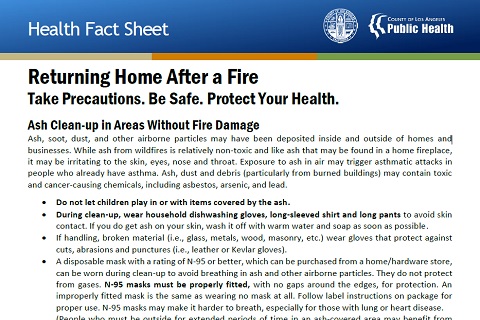
Returning Home After a Fire
Take Precautions. Be Safe. Protect Your Health.
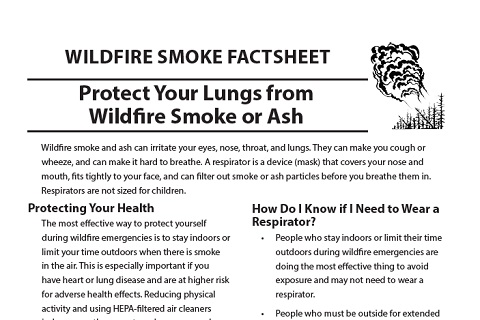
Wildfire Smoke Factsheet
Protect your lungs from wildfire smoke or ash...
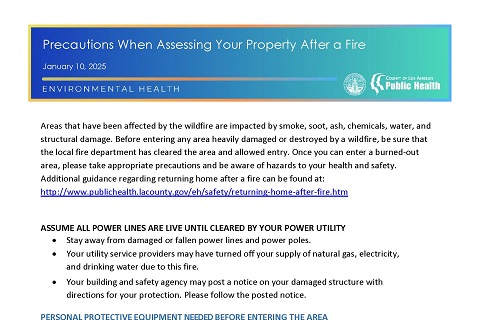
Precautions When Assessing Your Property After a Fire

Pregnancy and Wildfires - Tips to Minimize Risks

What You Should Know About Air Purifiers
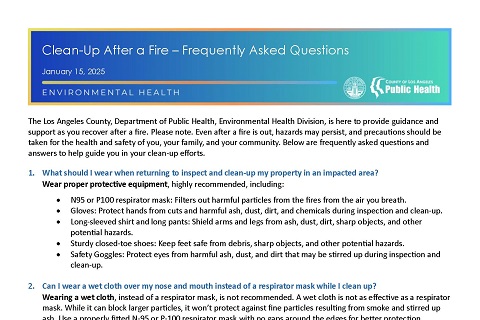
Clean-Up After a Fire
Frequently Asked Questions
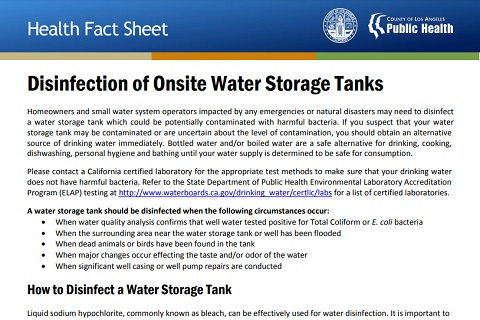
Disinfection of Onsite Water Storage Tanks
Health Fact Sheet
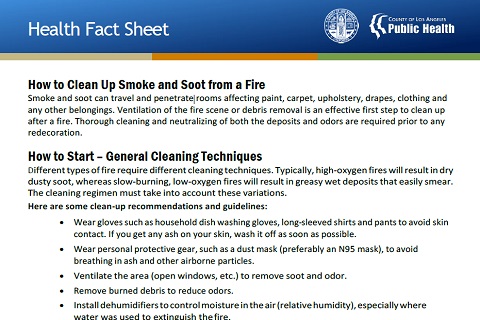
How to Clean Up Smoke and Soot from a Fire
Smoke and soot can travel...
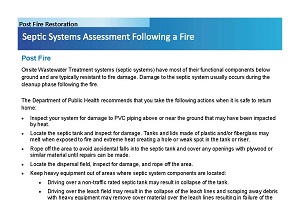
Septic Systems Assessment Following a Fire
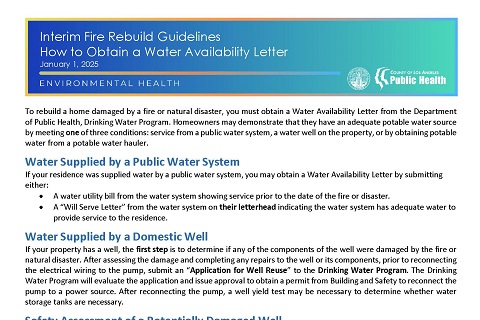
Interim Fire Rebuild Guidelines
How to Obtain a Water Availability Letter
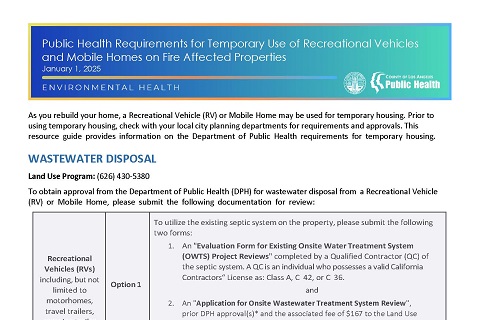
Public Health Requirements for Temporary Use of Recreational Vehicles and Mobile Homes on Fire Affected Properties

Workplace Health and Safety: Wildfire Smoke

LA County Schools/Wildfire Telebriefing

Wildfire Air Quality Schools Guidance
For additional guidance, including information on how to ensure you have safe drinking water, interim fire rebuild guidelines, and fire recovery guidelines for food operators, visit
